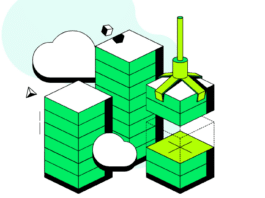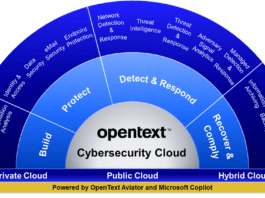Red Hat Device Edge provides resource-constrained edge devices with flexible production-grade Kubernetes and Linux, improving consistency for edge deployments at practically any scale.
Open source software company Red Hat, Inc. today unveiled Red Hat Device Edge, a tool for dynamically deploying traditional or containerized workloads on small devices including robots, IoT gateways, points of sale, public transportation, and more. Red Hat Device Edge provides an edge-optimized operating system built from Red Hat Enterprise Linux, a lightweight Kubernetes orchestration solution built from the edge capabilities of Red Hat OpenShift, and an enterprise-ready and supported distribution of the Red Hat-led open source community project MicroShift. This newest addition to the Red Hat edge product line seeks to offer a platform that is future-proof and enables enterprises’ architecture to change as their workload strategy does.
Many new issues, operational requirements, and commercial constraints are about to materialise as more businesses implement edge computing across a wider range of use cases. Businesses must be able to deal with small form-factor edge devices in these resource-constrained locations because they face a variety of operational, environmental, and security concerns in the automobile, manufacturing, and other sectors. In the end, the demands on computing capacity, software compatibility, and security footprint vary amongst different devices.
When compared to conventional Kubernetes edge deployments, Red Hat Device Edge gives enterprises the freedom to deploy containers at the edge with a minimal impact on the environment. Additionally, incorporating: aids in addressing many of the concerns surrounding large-scale edge computing at the device edge.
Kubernetes designed for edge deployments, allowing IT teams to leverage well-known Kubernetes functionality in a new, smaller, lighter-weight footprint made available via MicroShift. This lowers the entry barrier for teams developing cloud-native apps for edge computing settings and makes it possible for them to use their current Kubernetes skills to improve operational consistency throughout the full hybrid cloud, from the datacenter to public clouds to the edge.
An edge-optimized Linux OS with intelligent updates that require the least amount of bandwidth is created from Red Hat Enterprise Linux, the top enterprise Linux platform in the world. This supports businesses in addressing connectivity issues while minimising the impact on edge innovation.
Red Hat Smart Management capabilities for centrally scaling and monitoring fleets of edge devices. IT teams may maintain a stronger edge management and application security posture by utilising zero-touch provisioning, system health visibility, and upgrades with automatic rollbacks.
Red Hat Device Edge for remote, limited-resource use cases across several industries To assist Red Hat customers and partners in navigating their most difficult edge settings, Red Hat Device Edge was developed. For instance, Lockheed Martin and Red Hat have been working together on the MicroShift project community, and Lockheed Martin is also deploying Red Hat Device Edge to modernise and standardise its application delivery and AI workloads in challenging environments like space, contested military environments, and wildland fire management. Furthermore, ABB intends to employ Red Hat Device Edge for ABB AbilityTM EdgeniusTM on devices with limited resources. A complete edge platform for industrial software applications is called Edgenius.
Regardless of the industry, Red Hat Device Edge is intended for businesses that need small form factor edge devices that can run bare metal, virtualized, or containerized applications. Other use cases could include, but are not restricted to:
- On public transportation, where edge devices are frequently in motion but yet require faster processing via AI/ML to evaluate data locally in real time, there are tiny, connected nodes (i.e. railways, mining, cars, drones).
- Resilient resource nodes are used in difficult situations, such as weather monitoring stations, where an edge device can still manage on its own by performing automated software rollbacks, maintaining a stronger security posture, and more effectively enforcing sensitive data rules.
- emerging edge restricted scenarios in which tens of thousands of edge devices may be operating applications in environments where connection, weight, and temperature are all big issues.
Red Hat Device Edge runs a wide range of workloads using Podman for edge container management or MicroShift for a Kubernetes API, meeting enterprises wherever they are in their edge computing journey at the moment. Even legacy Windows applications will be accessible to customers inside a virtual machine.




